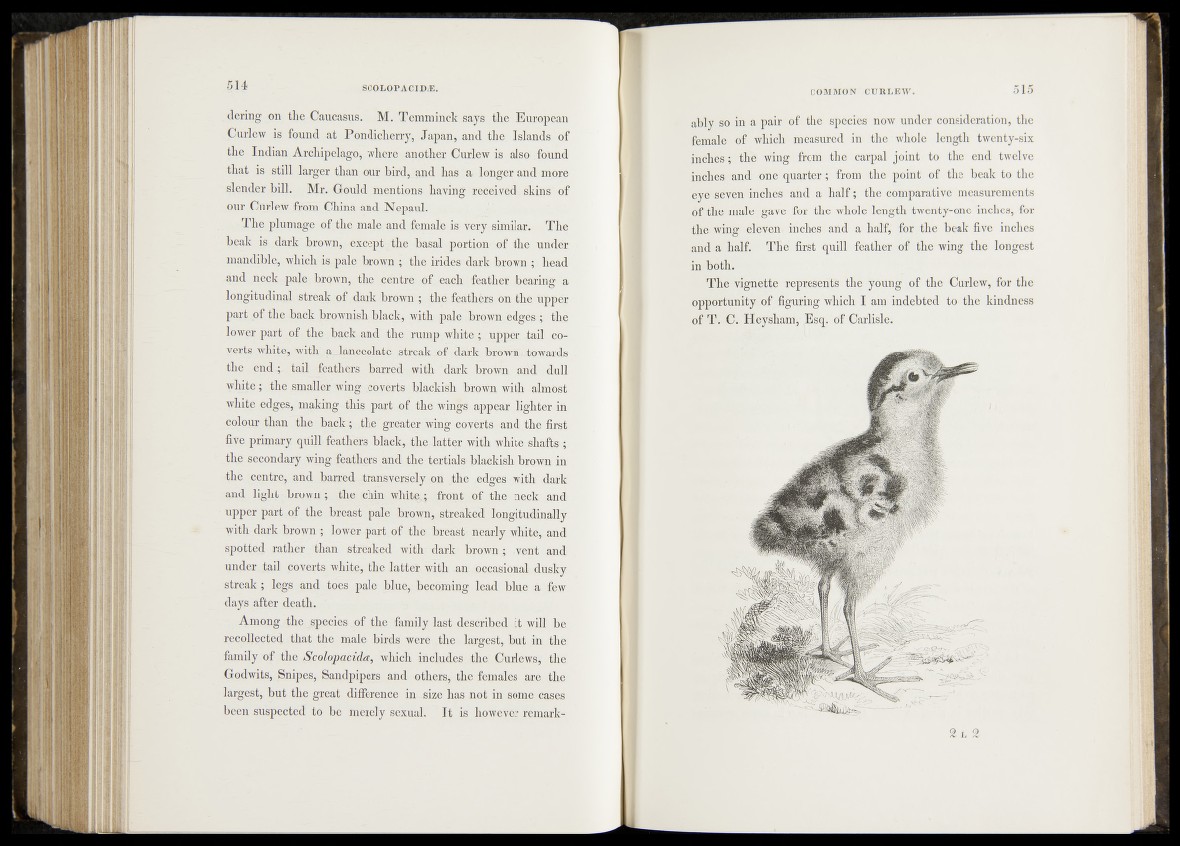
/dering on the Caucasus. M. Temminck.says the European
Curlew is found at Pondicherry, Japan, .and the .Islands of
the Indian Archipelago, where another Curlew i's also .found
-that is still .larger than our bird, 'and has a longer and more
slender bill. Mr. Gould mentions having -recei-ved.-^ skins“ of
our Curlew from China and !Nepaul. -
The plumage .of^he male and female is Ypry-rsimi-lar. The
beak |s: dark ;>^pwn, exce,ptvthe basal portion „of th^urider,
mandible, which is pale brown thq iridestdayk brown ; head
and neck,-pale brown,, the centre }of„ each feather- bearing a
Jj^gitudinal streak of ^dark ‘brown ; the feathfers on the upper
part vof the-back brownish-black, with pale^browme^gjcs?; the
lower part ^ th e .back and th^iWap white*; upper tail coverts
white, with', ^lanceolate streak mf dark brewn ^towards
the end-; tail feathers barred with 'dark -bjpWn arid dull
wlrite; the smaller 'wing .coverts. blackish brown with almbst
white edges, 'making - this part of the" wiii|ps\appear lighi^fin
colour than the b a ck ^ th e ' greaterJwmgjc,o.y^t^iririd';the first
five primary qudl. feathefrs black,-the -latt<p^0th while shafts ;
the secondary wing Teachers- and^«^^^^ brown in
?the centre, and, barred -traris-verselykori the .edges with,; dark
and light-brown ; the ;chin whit^,^ front blf .the nepk and
upper part of the .breast pale brown, streake^longitudinally
with dark brown^Mower part, of' the- brea’st;-nearly wjkit,e, andr
spotted rather. than streaked with dark brown; ,vent and
under tail coverts white, .the latter, with an^oeqasiona^dusky
streak; legs and toes, pale blue,-becoming lead blue a few
days after death. '
Among the ^species .of .Jhe family last described it will
recollected that the male birds were the * largest, but in the
family of the Scolopacidte, which includes the Curlews, the
Godwits, Snipes, Sandpipers and others, the females are the
largest, but the great difference in-size has not in some cases
been suspected to be merely sexual. I t is however remarkably
so in a pair of the species now under consideration, the
female of which measured in the whole length twenty-six
inches-;; the wing from the carpal joint to the end twelve
inches and one quarter; from the point of the beak to the
eye-seven inches and a half; the comparative measurements
of the male gave for the whole length twenty-one inches, for
the wing eleven, inches and a half, for the beak five inches
and a half. The first quill feather of the wing the longest
ini both.
ThbfVignette represents the -yoring of the Curlew, for the
opportunity jof figuring which I am indebted to the kindness
of T. C. Hevsham. Esa.'of Carlisle.